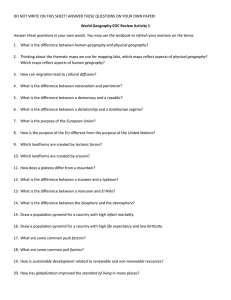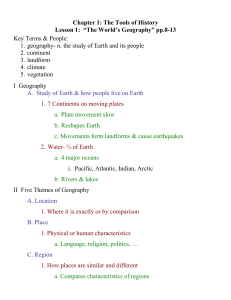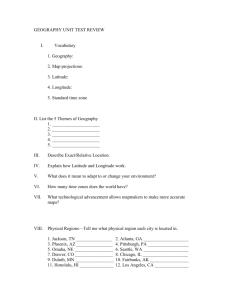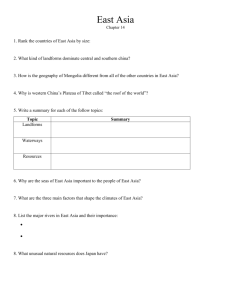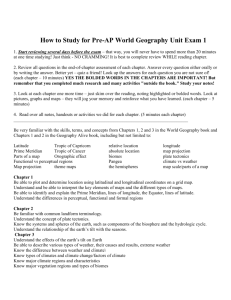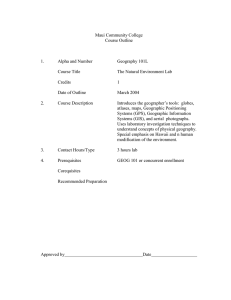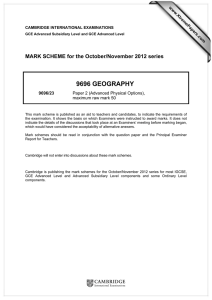GEG 111 Physical Geography
advertisement
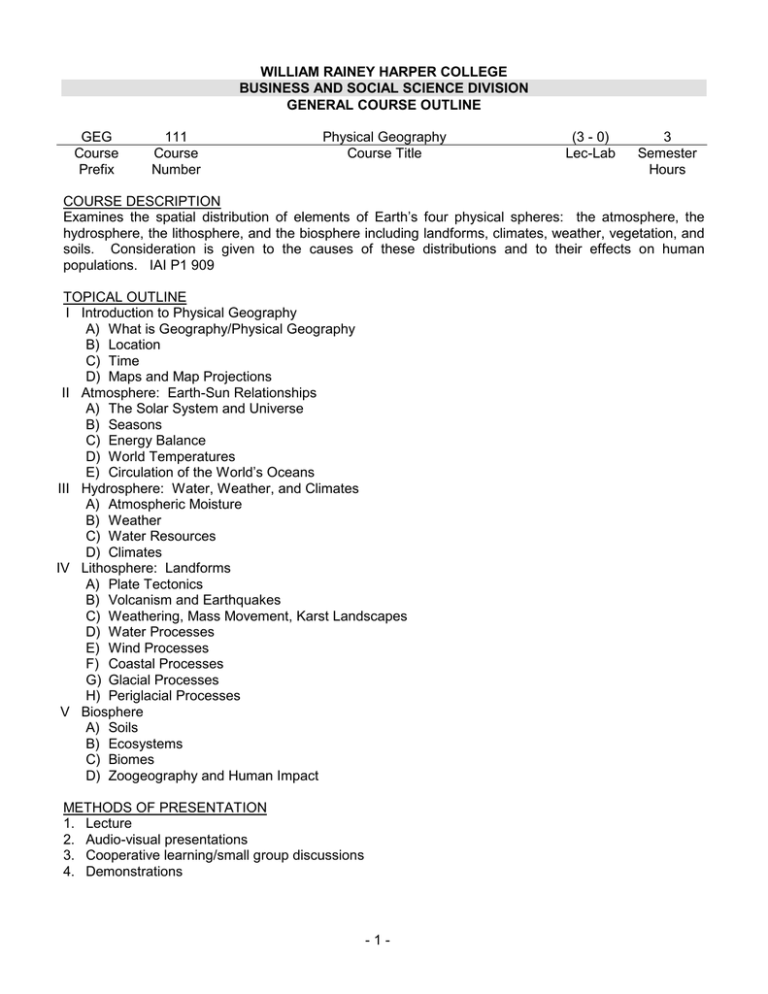
WILLIAM RAINEY HARPER COLLEGE BUSINESS AND SOCIAL SCIENCE DIVISION GENERAL COURSE OUTLINE GEG Course Prefix 111 Course Number Physical Geography Course Title (3 - 0) Lec-Lab 3 Semester Hours COURSE DESCRIPTION Examines the spatial distribution of elements of Earth’s four physical spheres: the atmosphere, the hydrosphere, the lithosphere, and the biosphere including landforms, climates, weather, vegetation, and soils. Consideration is given to the causes of these distributions and to their effects on human populations. IAI P1 909 TOPICAL OUTLINE I Introduction to Physical Geography A) What is Geography/Physical Geography B) Location C) Time D) Maps and Map Projections II Atmosphere: Earth-Sun Relationships A) The Solar System and Universe B) Seasons C) Energy Balance D) World Temperatures E) Circulation of the World’s Oceans III Hydrosphere: Water, Weather, and Climates A) Atmospheric Moisture B) Weather C) Water Resources D) Climates IV Lithosphere: Landforms A) Plate Tectonics B) Volcanism and Earthquakes C) Weathering, Mass Movement, Karst Landscapes D) Water Processes E) Wind Processes F) Coastal Processes G) Glacial Processes H) Periglacial Processes V Biosphere A) Soils B) Ecosystems C) Biomes D) Zoogeography and Human Impact METHODS OF PRESENTATION 1. Lecture 2. Audio-visual presentations 3. Cooperative learning/small group discussions 4. Demonstrations -1- STUDENT OUTCOMES: (The student should…) 1. demonstrate a working knowledge of latitude and longitude and map projections. 2. understand general meteorological terms and atmospheric processes. 3. demonstrate a general comprehension of plate tectonics. 4. apply concepts of plate tectonics to explain the location of earthquake and volcanic activity worldwide. 5. demonstrate a general understanding of the fluvial, glacial, and coastal processes. 6. demonstrate a general knowledge and location of the earth’s major biomes and of ecosystem development. 7. demonstrate a general awareness and understanding of human activity and its impact on the world’s ecosystems. 8. demonstrate a general understanding of weathering and soil development. 9. apply concepts of weathering to identify various physical landforms. METHODS OF EVALUATION 1. Quizzes and multiple choice and/or essay exams 2. Written reports relating to individual assignments 3. Cooperative learning activities 4. Problem sets and assignments 5. Map interpretation 6. Map construction exercises 7. Final exam TEXTBOOK & INSTRUCTIONAL MATERIALS McKnight, Physical Geography, 10th ed., Prentice Hall, 2011. Prepared by: Veronica Mormino Summer, 2010 -2-


